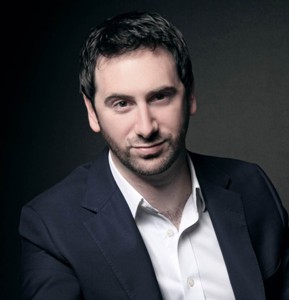 How would you distinguish Dubai from other big Middle Eastern Cities? Would it be by its significant architectural achievements? Maybe the advanced technology or the multiculturalism. By EXPO 2020 there are likely to be a number of other characteristics the citydeveloped and established is known for and is recognised by.
How would you distinguish Dubai from other big Middle Eastern Cities? Would it be by its significant architectural achievements? Maybe the advanced technology or the multiculturalism. By EXPO 2020 there are likely to be a number of other characteristics the citydeveloped and established is known for and is recognised by.
Recognising Dubai in cultural terms has been a long-term goal for the UAE government, with various initiatives either completed or under way. Earlier this year, government set various targets for 2020, one of which being for tourism numbers to reach 20 million, but in order to attract more people to Dubai numerous creative enterprises needed to be initiated and implemented for this to become a reality. Already, expectations are being exceeded.
Mnot onthese initiatives already up and running. They are creating a unique environment for both tourists and inhabitants, and in doing so, boosting economic revenues.Research So what is creative placemaking and how is it
The research titled ‘A phenomenological study of creative placemaking: extending the concept to the destination branding of Dubai’, aimed to define the contributors of successful creative placemaking and its impact on Dubai as a destination. The research findings were drawn from a literature review of high-ranking peer reviewed journals with 175 references and interviews with subject matter specialists and senior professionals in creative, government and cultural sectors conducted over a 4-month period.
What is creative placemaking?
Introduced by Rocco Landesman, as Chairman of the National Endowment for the Arts in 2009 when repositioning arts and culture in US communities, creative placemaking partners people from public, private, non-profit and community sectors to strategically shape the physical and social character of a neighbourhood, town, tribe, city or region around arts and cultural activities.
The term was given to the practice of leveraging the power of arts, culture and creativity to serve the community’s interest. In doing so, the town or city takes on its own distinct identity. This acts as a form of marketing, known in the industry as destination branding.
*Gov’t input*
Visitors to any destination are seeking an experience. They want to take an experience home with them, or look back on an event as something like an adventure – not done before and unlikely to be done again. It is a full experience that people seek and they are expecting a distinctive experience in each place. This explains the popularity of services such as Airbnb, which is essentially the rental of a domestic property. Rather than stay in a hotel, the user will enjoy the unique and authentic experience of a residential property, with all the characteristics and style of a home typical to that area.
Destination Branding
The term destination branding refers to the branding of a place as if it were a consumer product. As tourism as a product is highly experiential in nature, creative placemaking is being used more in marketing terms as a way of creating value from art and using the result as a form of branding.In using a creative network for the purposes of design, for example, an area will become unique in its appearance. This uniqueness has a value and can be marketed as such. The above mentionedA clear link can now be drawn between the definitions of tourism destination and the brand through the use of creative placemaking. Shared characteristics of destination and creative placemaking include experiences such as attending the Dubai Opera and with Dubai now widely perceived as the leading city in the region for creative industries, and therefore, it is now moving onto new areas and new depths an of branding recognition. What could be considered as a previous style of positioning – one focussed more on architecture – is now moving towards an experience based position, with the focal point being music concerts and a wide range of festivals (Taste Dubai, Rudimental music concert). Dubai, no longer recognised simply by its engineering feats and architectural accomplishments, is a place where you can experience world-class events and festivals.
Creative placemaking initiatives have worked in conjunction with several big Dubai projects. Dubai design district, although partially open, is expected to positively position Dubai in terms of branding internationally, through designer fashion and interior design, whilst Dubai opera will host a number of major touring productions in performing arts. Dubai canal will support the creative placemaking of the city through plans of rejuvenation and community building, further developing the destination as a brand. With most of these environments now fully operational and recognised as cultural hot-spots, there will inevitably be a growing number of visitors to the area.
Conclusion
The creative sector benefits world cities primarily through socio-economic contribution; a product of creative placemaking. As Dubai is a creative city, and the creative industries are sophisticated and mature, creative placemaking positively affects Dubai as a destination. Architecture, film and video, design and predominantly performing arts are the main drivers of creative placemaking in Dubai, and with further integration will positively position Dubai in terms of creative placemaking. The use of the cultural industries coupled with a human-centered approach to development based on mutual respect and open dialogue among cultures will lead to lasting, inclusive and equitable results for Dubai as a place to live and a destination to visit.
Authored By Hadley Newman, MENA Regional Director – Experiential @ Cheil MENA


